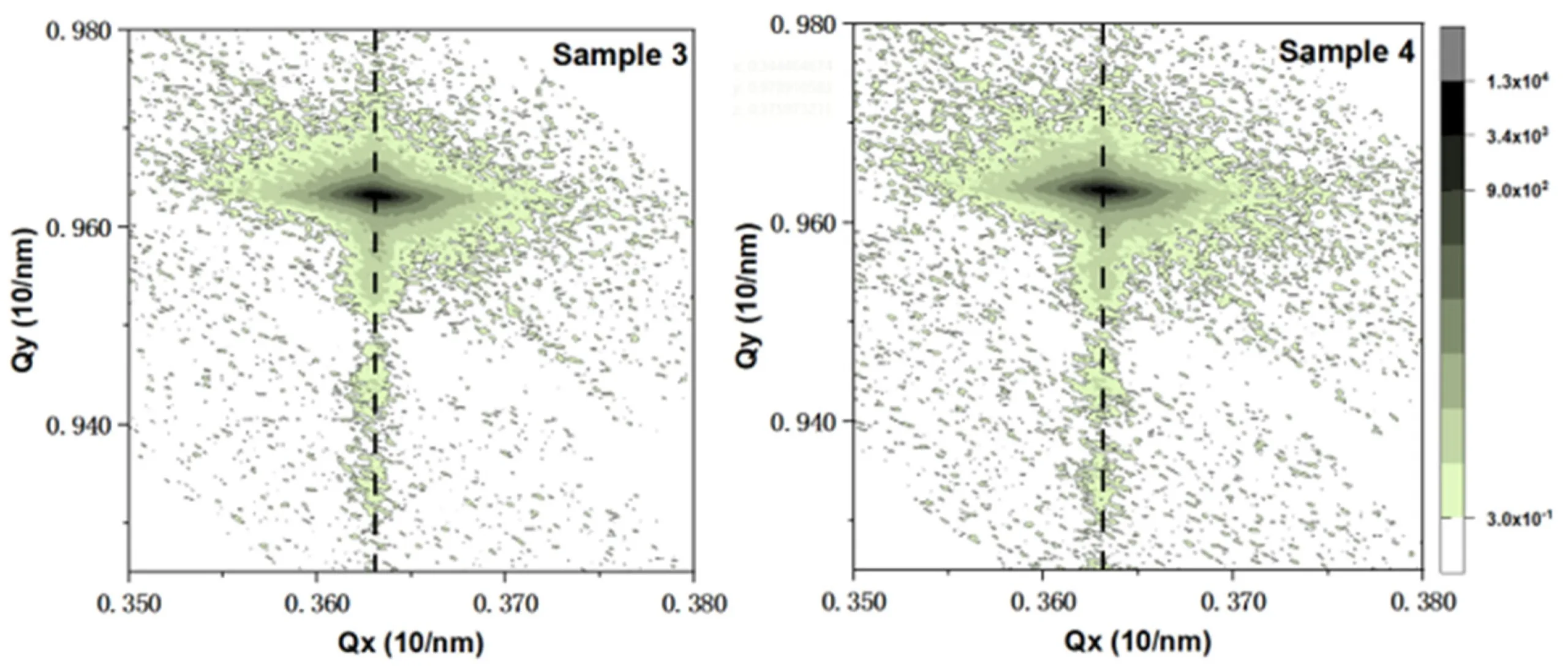A study by researchers from the Chinese Academy of Sciences has explored the impact of growth temperature on InGaN/GaN quantum well (QW) layers, which are used in LEDs and other optoelectronic devices. The team found that within a certain range, growth temperature can control the efficiency of indium incorporation into QWs and strain energy in the QW structure, affecting luminescence efficiency. However, too high an annealing temperature can increase indium migration, reducing luminescence intensity. The findings highlight the importance of thermal management in optimizing the performance of InGaN/GaN MQWs in optoelectronic devices.
What is the Influence Mechanism of Quantum Well Growth and Annealing Temperature on In Migration and Stress Modulation Behavior?
The study conducted by Luyi Yan, Feng Liang, Jing Yang, Ping Chen, Desheng Jiang, and Degang Zhao from the State Key Laboratory of Integrated Optoelectronics Institute of Semiconductors, Chinese Academy of Sciences, College of Materials Science and Opto-Electronic Technology, University of Chinese Academy of Sciences, and School of Electronic Electrical and Communication Engineering, University of Chinese Academy of Sciences, explores the effects of growth temperature of InGaN/GaN quantum well (QW) layers on indium migration, structural quality, and luminescence properties.
The researchers found that within a specific range, the growth temperature can control the efficiency of In incorporation into QWs and strain energy accumulated in the QW structure, modulating the luminescence efficiency. Temperature-dependent photoluminescence (TDPL) measurements revealed a more pronounced localized state effect in QW samples grown at higher temperatures.
However, a too high annealing temperature will enhance indium migration, leading to an increased density of nonradiative recombination centers and a more pronounced quantum-confined Stark effect (QCSE), thereby reducing luminescence intensity. These findings highlight the critical role of thermal management in optimizing the performance of InGaN/GaN MQWs in LEDs and other photoelectronic devices.
How are InGaN/GaN MQWs Used in Optoelectronic Devices?
Group III-V semiconductor materials and InGaN/GaN multiquantum wells (MQWs) are widely used in blue and green light-emitting diodes (LEDs), lasers (LDs), solar cells, and other optoelectronic devices due to their excellent optoelectronic properties. The complex physical and chemical processes involved in the MOCVD growth of InGaN materials have a significant impact on the quality of InGaN.
Further research is needed on how to achieve high-quality green light emission from InGaN/GaN quantum wells. Green emission requires a high content of In in the used InGaN, which may lead to fluctuations in the In composition and phase separation in quantum well structures. To avoid the attenuation of luminescence intensity, it is necessary to make the InGaN layer thin during the growth process to reduce defects caused by large strains.
What are the Effects of Growth Temperature and Annealing Temperature on Luminescence Characteristics?
In this study, the researchers investigated the growth of green-light InGaN/GaN MQW samples using the MOCVD method. The migration behavior of the In component in quantum wells under different temperatures was discussed. Through photoluminescence (PL) and electroluminescence (EL) analyses of InGaN/GaN QWs, the effects of well layer growth temperature and annealing temperature on the luminescence characteristics of quantum wells were studied.
Quantum well samples with uniform luminescence distribution and localized state distribution were achieved. The study found that a too high annealing temperature will enhance indium migration, leading to an increased density of nonradiative recombination centers and a more pronounced quantum-confined Stark effect (QCSE), thereby reducing luminescence intensity.
How were the Experiments Conducted?
A series of green quantum well samples were grown. In the MOCVD growth process of quantum wells, TMIn, TMGa, and ammonia are used as precursors for In, Ga, and N respectively. Cp 2Mg and SiH 4 were used to achieve p-type and n-type doping of GaN layers, and N 2 and H 2 were used as carriers during the growth process.
N 2 is used as the carrier gas during the growth of quantum wells, whereas H 2 is employed for the growth of other structures. This is because H 2 can degrade the quantum well structure to some extent. At first, the GaN buffer layer and n-type GaN layer were grown on the 0001 crystal plane of a sapphire substrate. Then two cycles of InGaN/GaN quantum wells were grown on the GaN layer at 660C, 670C, and 680C to create 3 samples named as samples 1, 2, and 3 respectively.
What were the Findings of the Study?
The study found that within a specific range, the growth temperature can control the efficiency of In incorporation into QWs and strain energy accumulated in the QW structure, modulating the luminescence efficiency. Temperature-dependent photoluminescence (TDPL) measurements revealed a more pronounced localized state effect in QW samples grown at higher temperatures.
However, a too high annealing temperature will enhance indium migration, leading to an increased density of nonradiative recombination centers and a more pronounced quantum-confined Stark effect (QCSE), thereby reducing luminescence intensity. These findings highlight the critical role of thermal management in optimizing the performance of InGaN/GaN MQWs in LEDs and other photoelectronic devices.
What is the Significance of this Study?
The findings of this study are significant as they highlight the critical role of thermal management in optimizing the performance of InGaN/GaN MQWs in LEDs and other photoelectronic devices. The study provides valuable insights into the effects of growth temperature of InGaN/GaN quantum well (QW) layers on indium migration, structural quality, and luminescence properties.
The research also sheds light on the influence of temperatures such as layer growth temperature and annealing treatment temperature on the indium migration mechanism during the growth process of InGaN/GaN multiquantum wells. This could potentially lead to the development of more efficient and high-quality optoelectronic devices in the future.
Publication details: “The Influence Mechanism of Quantum Well Growth and Annealing Temperature on In Migration and Stress Modulation Behavior”
Publication Date: 2024-04-18
Authors: Yan Liang, Feng Liang, Jing Yang, Ping Chen, et al.
Source: Nanomaterials
DOI: https://doi.org/10.3390/nano14080703

